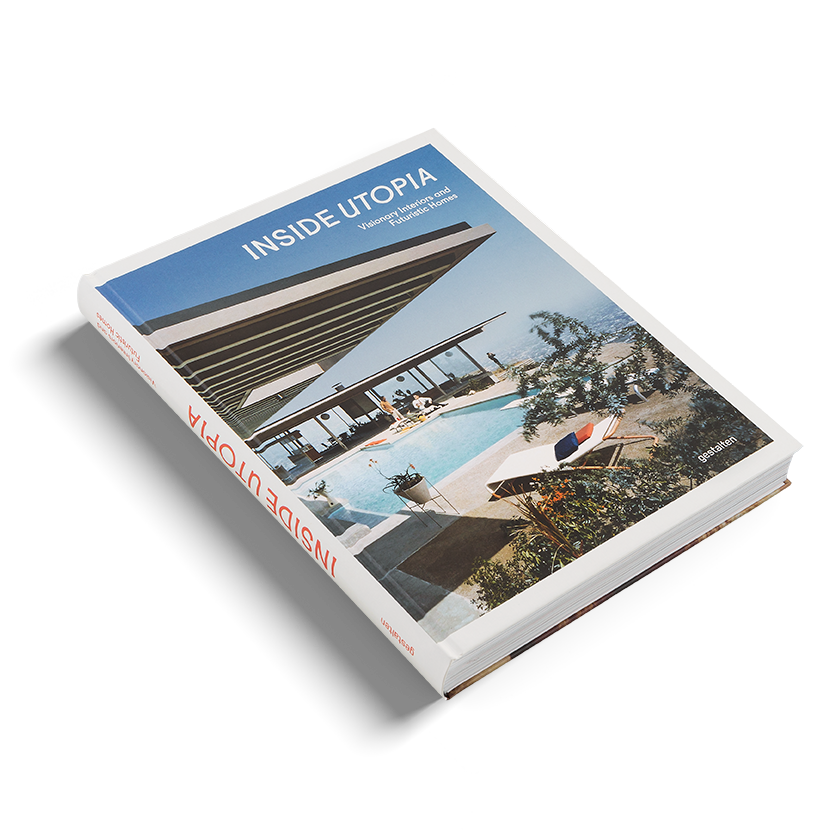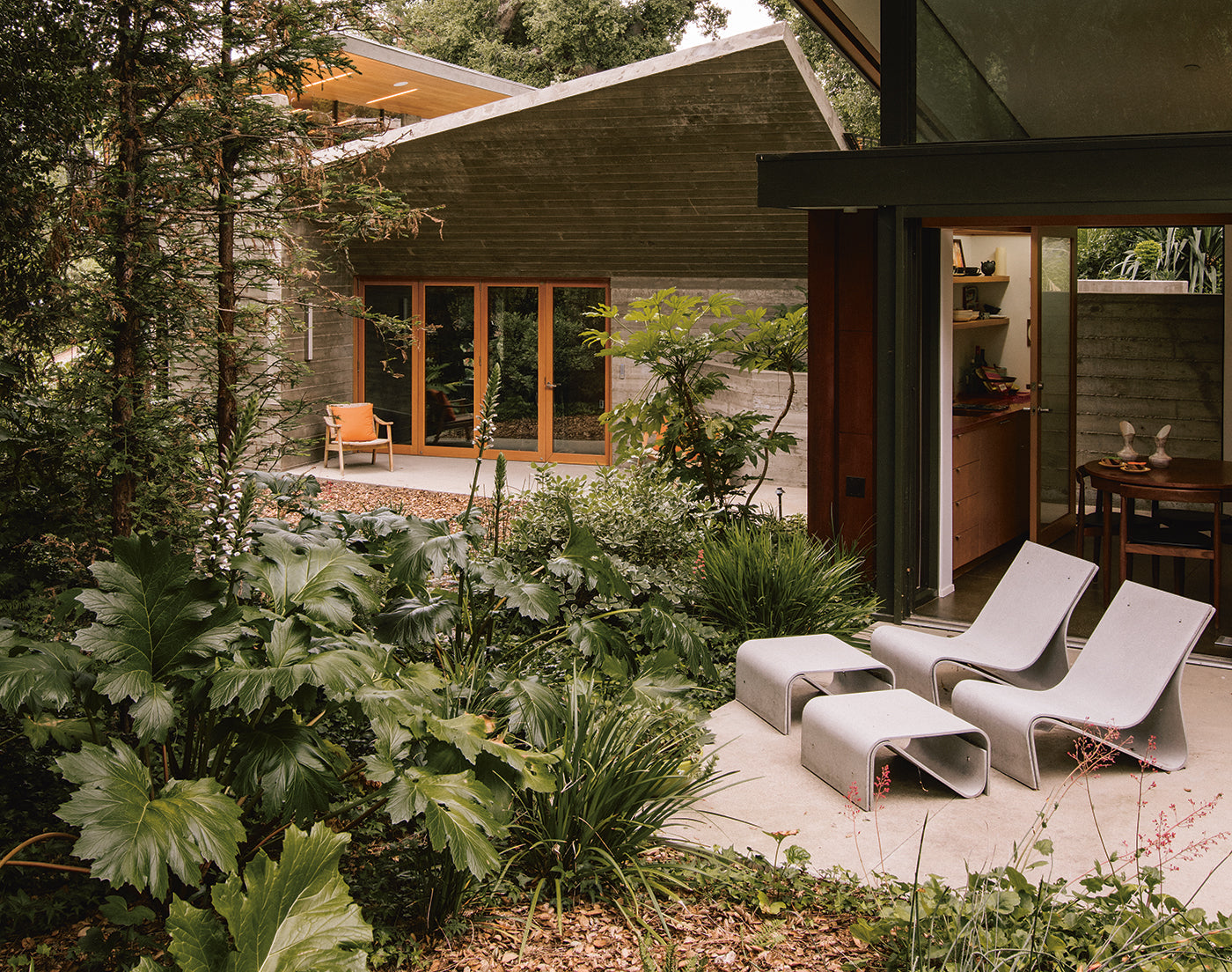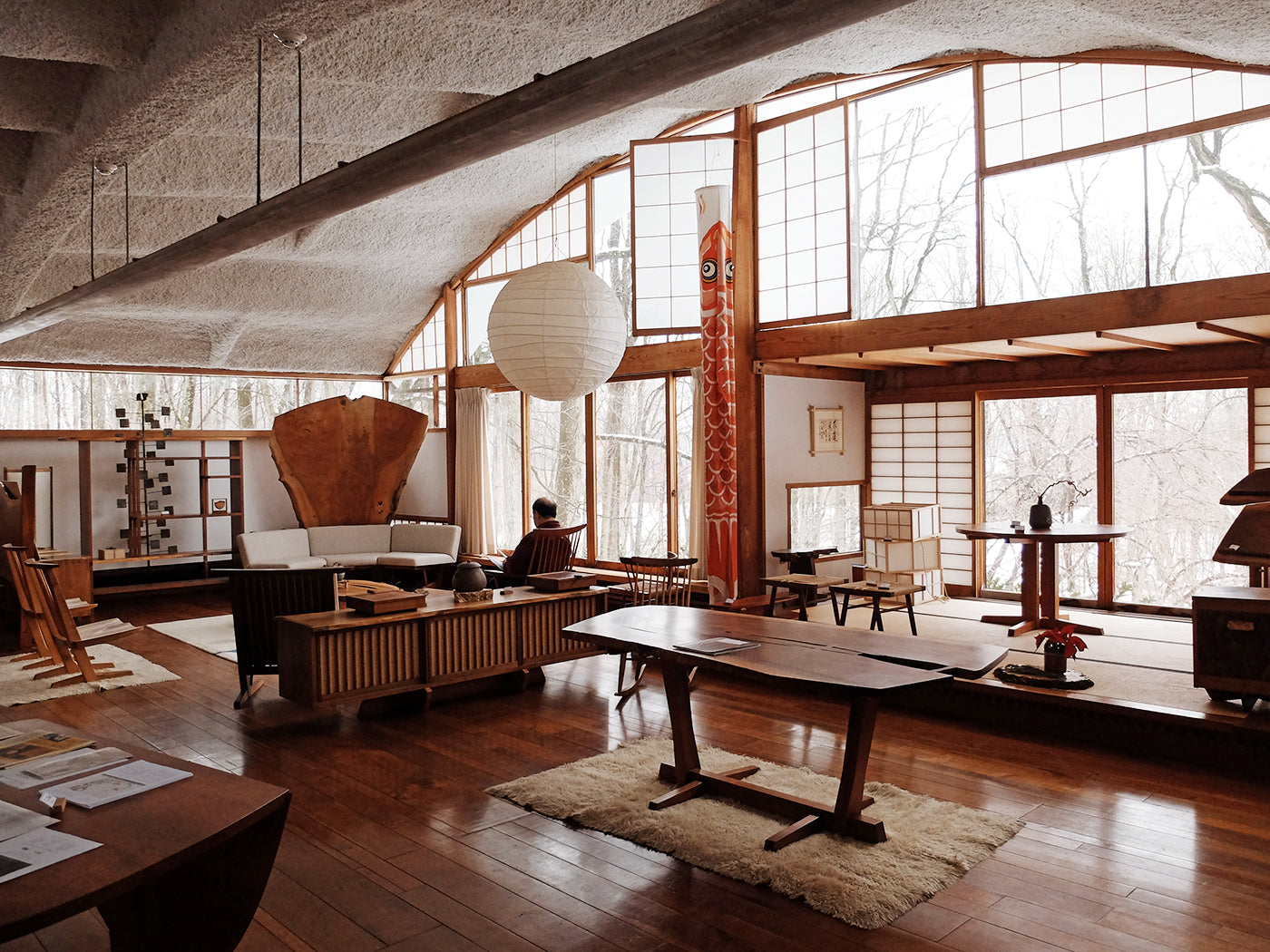
George Nakashima’s Home Is a Timeless Modernist Relic
A design icon who bridged modern visions from the West with Japanese craftsmanship
Versatile American designer and craftsman George Nakashima connected masterful carpentry, a sculptural sensibility, and spirituality in his exceptional designs. His New Hope studio, still open to the public today, embodies this work.
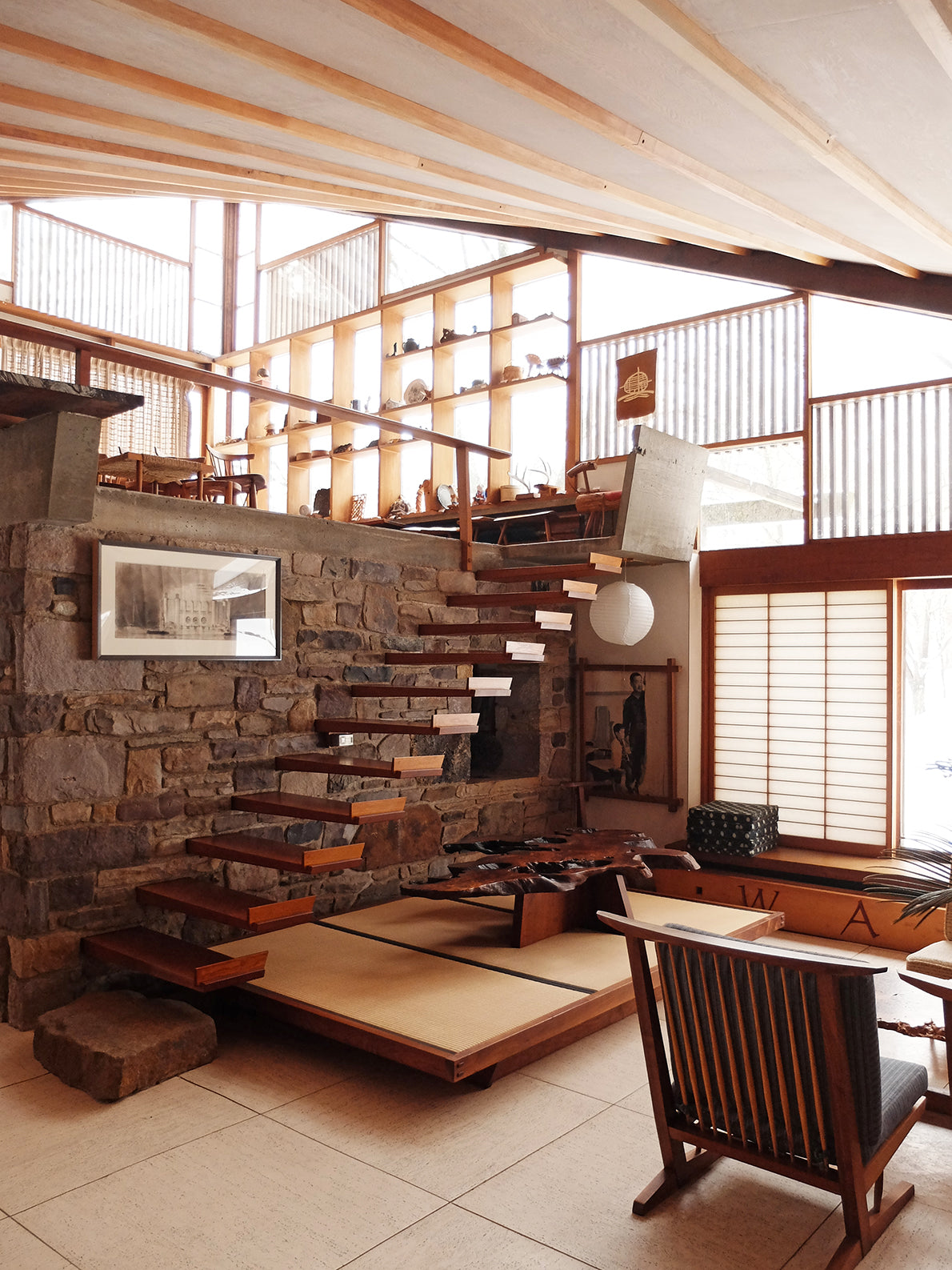
Interior of the Minguren Museum, the last structure completed on the property in 1967. (Photo: Adam Štěch, Inside Utopia)
For more than half a century George Nakashima created unique sculptural furniture. With great respect for the natural qualities of wood, he crafted his designs from his large estate in New Hope, Pennsylvania. To this day, his remarkable legacy lives on through his family, who produces fine artisan furniture under his trademarked name. It is a name that has come to be one of the most respected in the history of modern American decorative arts.
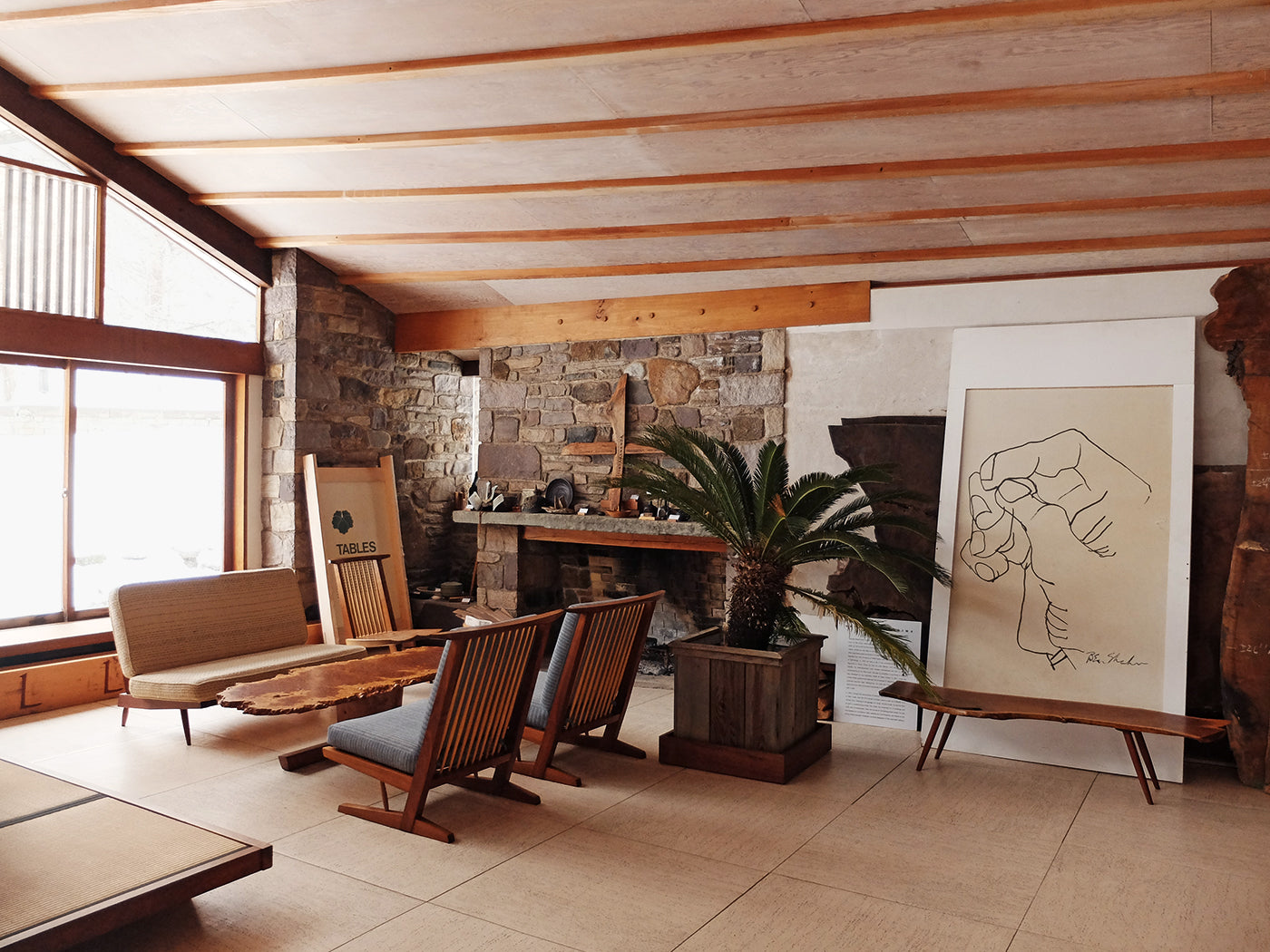
The Minguren Museum was used by Nakashima and his collaborators for family celebrations and special events. (Photo: Adam Štěch, Inside Utopia)
Nakashima was born in 1905 in Spokane, Washington, and decided early on that he would study architecture. He attended the University of Washington and in 1931 received a Master’s degree from M.I.T. He went overseas to explore the world and learn different architectural styles and methodologies. Traveling alone, he spent time in various places from Paris to Pondicherry in India.
Nakashima dedicated his entire life to designing and producing a limited release of custom furniture, individual pieces of art that earned him a place at the forefront of the studio furniture movement
He then settled in Japan and joined the Tokyo studio of famous architect Antonin Raymond. During the war, Nakashima returned to the United States but was then forced into a Japanese internment camp. After being interrogated back into society, he made headlines for his Conoid Studio with its signature semicircular roof in 1956. Inside, he designed a series of furniture solitaires named Conoid. The series included a cantilevered chair that later became one of his most famous and best-selling pieces.
In 1967, Nakashima completed one of the last buildings on this extensive property. The Minguren Museum, an arts building, was the culmination of all his ambitions as an architect. The exterior of the building is decorated with an abstract mosaic painting by Ben Shahn.

The Studio is furnished with cozy seating areas, such as this one with a built-in sofa and Nakashima-designed carpet. (Photo: Adam Štěch, Inside Utopia)
Currently, the property of George Nakashima is listed on the U.S. National Register of Historic Places and still plays a key role in the production of his eponymous company. The house is a combination of modern international styles with traditional craft pieces from Japan. The interior of the reception house, which serves as a guesthouse, includes more luxurious materials from handmade rice paper screens to Japanese plaster walls.
Constructed between 1954–1975, the exterior and interior are odes to the modernist visions that swept postwar nations. A style that was underappreciated by the Western public of that era, Nakashima House serves as a homage to mid-century modernism adored by architects, designers, and craftsmen of all trade.
Radical visions coupled with poetic design, Inside Utopia showcases an era of futuristic homes that transformed the public's imagination.
